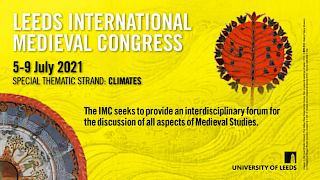Tolkien spent most of his lifetime inventing an extended mythology which displays an impressive array of secondary world infrastructures (Mark Wolf, Building Imaginary Worlds, Routledge, 2012). The richness of his world-building allows scholars to directly address the overall theme of this conference with papers exploring broad aspects of climate and its relationship and impact on the heavens, waters, landscapes, patterns of weather and peoples in Tolkien’s world-building as expressed through his narratives, language invention, and his own exploration and scholarship.
Papers
Gaëlle Abaléa, independent scholarNúmenor was not only submerged by water, it was also drowned in the fear of the shadow of Death. The great tale of the doomed city, inspired by the myth of Atlantis and Tolkien’s recurrent dream is less the depiction of a natural catastrophe than the long and insidious manipulation of an ancestral fear. Indeed Sauron’s ill advice to the King of Númenor is a transformative force that touches every aspect of the island’s life: political, linguistic, and religious leading eventually to its demise. The opposition of the two factions and their attitudes is at the heart of Tolkien’s reflections on death.
❧
Andrzej Wicher, Zakład Angielskiego Dramatu, Teatru i Filmu, Uniwersytet ŁódzkiTolkien places the country of his hobbits in ‘the North-West of the Old World, east of the Sea’ [The Lord of the Rings §0.4.07]. The action of The Lord of the Rings takes place in the north-west of Middle-earth. The Shire is in the north-west of that north-west. The events described in The Silmarillion take place on the continent of Beleriand, later lost beneath the sea, which extended to the north-west of Middle-earth. We can observe something bordering on obsession with this northwesterly direction in Tolkien’s legendarium. It reflects no doubt the northwesterly situation of Britain, Tolkien’s mother country, in the context of Europe. Also the writer’s vivid Scandinavian interests meant that he privileged the north-west, or simply north, of Europe. But if we want to reach Scandinavia from Britain we have usually to move eastward. Both the action of The Hobbit and The Lord of the Rings largely consists in an eastward movement. In the east lies danger and adventure. Indeed, the symbolism of compass bearings in Tolkien seems a relatively unexplored territory that requires more attention.
❧
Aurélie Brémont, Centre d’Etudes Médiévales Anglaises (CEMA), Sorbonne Université, ParisIn The Lord of the Rings, the first year of King Elessar’s reign is described as follows: ‘3020, S.R. 1420: The Great Year of Plenty’, [a year of] ‘wonderful sunshine and delicious rain, in due times and perfect measures […] an air of richness and growth. […] The fruit was so plentiful that young hobbits very nearly bathed in strawberries and cream’ (LRC §B.TA.3020. The link between a good king and a bountiful nature is present throughout myth and literature, but where does this idea actually come from? Is there an explanation to the link between nature and human rule?
❧
Kristine Larsen, Professor, Geological Sciences, Central Connecticut State UniversityThere exist fascinating shared complications in the Norse mythology of Ragnarök and the eschatology of J.R.R. Tolkien’s secondary world (especially its earliest iterations in The Book of Lost Tales). These include the assigned gender identities of the celestial bodies, their sometimes seemingly erratic motions (and resulting implications for climate), their imperfections (reflecting our current flawed world), and their prophesied future roles (the rekindling of the ‘magic sun’ at the promised renewal of the world). It will be shown that Tolkien’s treatment of The Legend of Sigurd and Gudrún forms a bridge between these primary world and secondary world cosmologies.
[This was an abbreviated version of the paper by the same title later published in Journal of Tolkien Research — ed.]
❧
